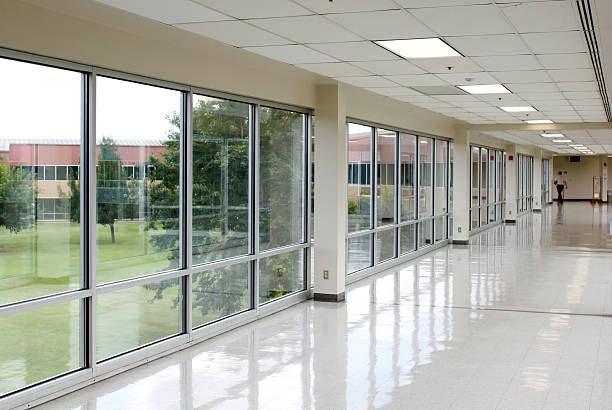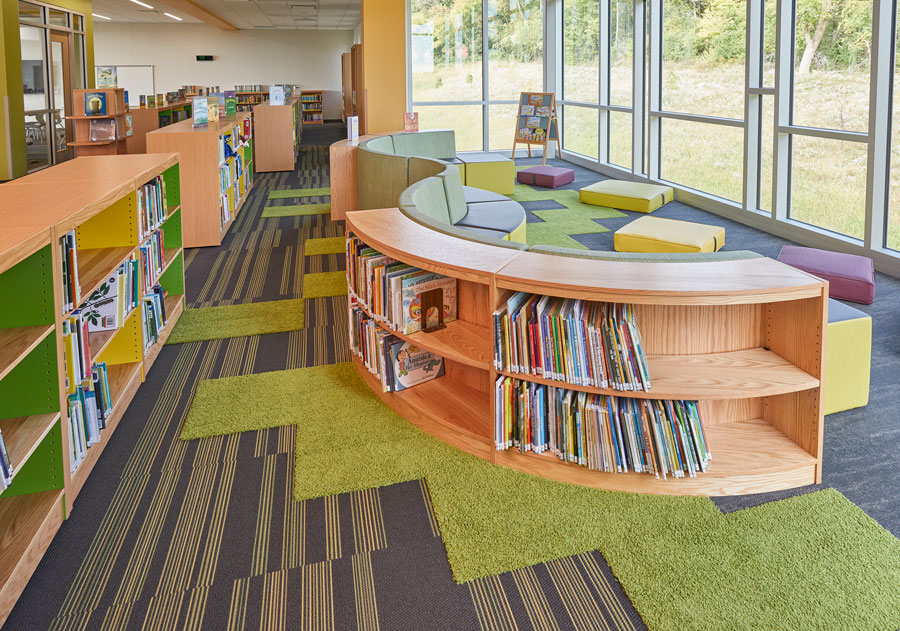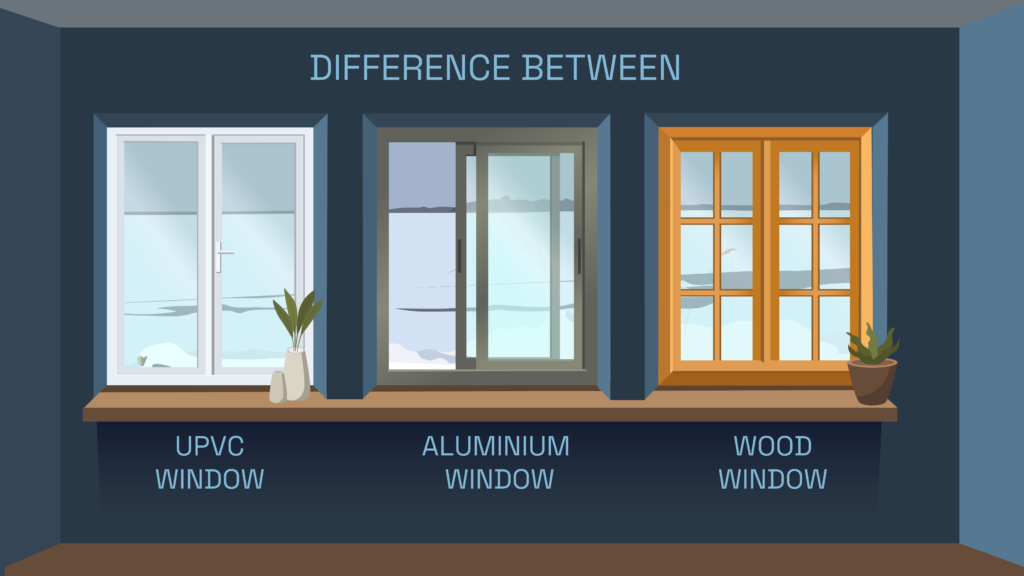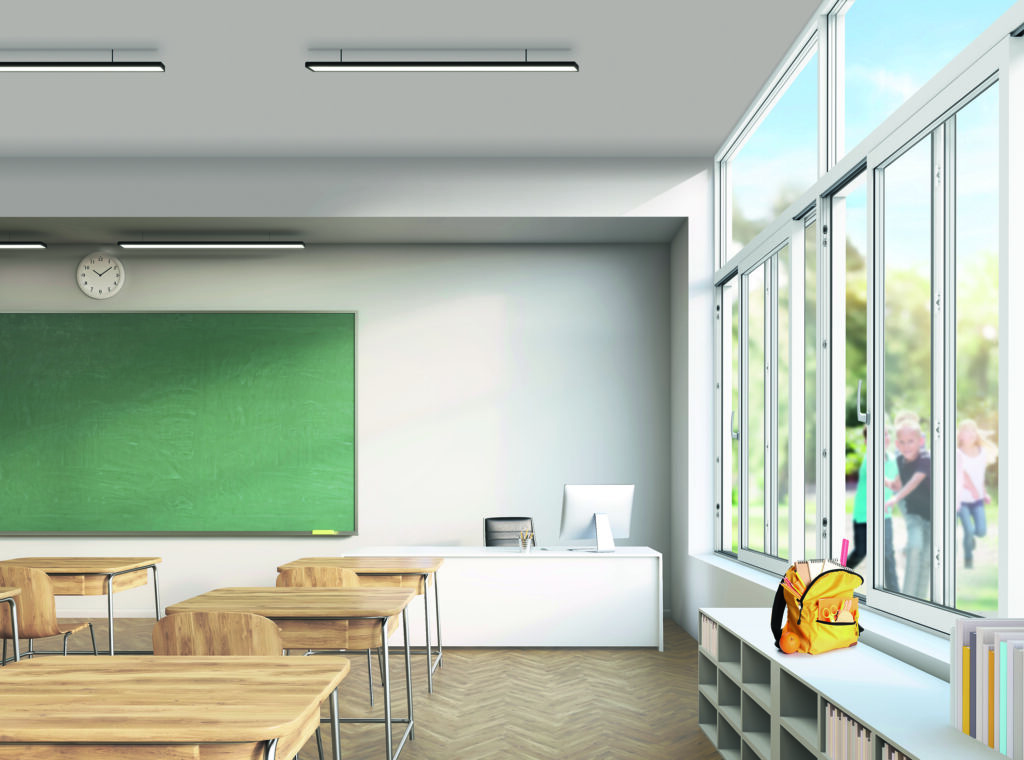Eco-friendly window options offer schools a sustainable way to create healthier, more productive learning environments while reducing energy costs. With windows playing a crucial role in ventilation, natural lighting, and temperature regulation, choosing environmentally conscious options can make a substantial impact on both student well-being and operational savings. This article explores various eco-friendly window choices for schools, highlighting their benefits for health, learning, and the environment.

Benefits of Eco-Friendly Windows for Schools
- Enhanced Indoor Air QualityEco-friendly windows are designed to improve air circulation, which can significantly enhance indoor air quality. Natural ventilation is essential in classrooms where students and staff spend long hours, and windows that allow for proper airflow reduce the reliance on HVAC systems.
- Impact: Improved indoor air quality can reduce respiratory issues, headaches, and allergies, leading to fewer absences and a healthier learning environment. Fresh air also promotes focus and attentiveness, which are critical for academic success.
- Increased Natural Light for Better Focus and MoodMany eco-friendly windows are designed to maximize natural light without causing excessive heat gain or glare. Sunlight exposure has been shown to improve mood, boost energy levels, and support cognitive function in students and teachers.
- Impact: Natural light enhances focus, reduces drowsiness, and creates a positive learning atmosphere. Schools with abundant daylight often report improved academic performance and reduced stress among students and staff.
- Reduced Energy Consumption and CostsEco-friendly windows improve insulation, minimizing heat loss in winter and blocking heat gain in summer. This energy efficiency lowers heating and cooling costs, helping schools reduce their environmental impact and save on operational expenses.
- Impact: Lower energy costs free up school budgets for educational resources and facility improvements. Additionally, reduced energy consumption aligns with sustainability goals, decreasing the school’s carbon footprint.
- Supporting Sustainability and Environmental ResponsibilitySchools that prioritize eco-friendly windows send a message of environmental stewardship to students, teaching them the importance of sustainability and responsible choices. These windows are often made from recyclable or renewable materials, supporting the school’s commitment to environmental responsibility.
- Impact: Creating an eco-conscious environment helps cultivate a culture of sustainability, encouraging students to carry these values into adulthood and make eco-friendly choices in their own lives.
Eco-Friendly Window Options for Schools
- Low-E Glass for Energy EfficiencyLow-emissivity (Low-E) glass is coated with a thin metallic layer that reflects infrared light, keeping indoor spaces cool in the summer and warm in the winter. This type of glass allows ample natural light while reducing glare and controlling temperature.
- Benefits: Low-E glass reduces energy consumption by preventing heat loss and gain. By controlling indoor temperatures, it helps create a comfortable learning environment without excessive reliance on HVAC systems.
- Double and Triple-Glazed Windows for InsulationDouble- and triple-glazed windows feature two or three glass panes separated by insulating gas, typically argon or krypton, which prevents heat transfer. These layers create a barrier that stabilizes indoor temperatures and reduces the need for heating and cooling.
- Benefits: Multi-glazed windows are highly effective for insulation, keeping classrooms comfortable year-round. This option is ideal for schools in areas with extreme weather, where efficient insulation can significantly reduce energy use and costs.
- Thermal Break Frames for Temperature RegulationThermal break frames are constructed with materials that prevent heat conduction, such as plastic or resin, placed between two layers of metal. This design interrupts the flow of heat, enhancing the insulation properties of the window.
- Benefits: These frames improve energy efficiency and are particularly valuable in cold climates, where they help maintain indoor warmth and comfort. By reducing the transfer of outdoor temperatures indoors, thermal break frames contribute to a more stable classroom environment.
- Recyclable Window Materials for Reduced Environmental ImpactEco-friendly windows are often constructed from recyclable materials such as aluminum or sustainably-sourced wood. Aluminum frames, for instance, are lightweight, durable, and fully recyclable, reducing environmental impact when they eventually need replacement.
- Benefits: Recyclable materials reduce waste and promote sustainability, helping schools meet eco-friendly building standards. Using sustainable materials also reinforces the school’s environmental commitment to students, fostering a culture of responsible resource use.
- Smart Glass for Automated Light and Temperature ControlSmart glass is an innovative option that adjusts its transparency based on lighting conditions or can be controlled via an app. This type of glass can reduce glare and adjust indoor temperatures by blocking or allowing sunlight as needed.
- Benefits: Smart glass offers versatility, providing the right amount of natural light without manual adjustments. This reduces the need for artificial lighting and helps regulate classroom temperature, contributing to both energy savings and a comfortable learning environment.
- Shatterproof and Laminated Glass for Safety and DurabilityShatterproof and laminated glass add an extra layer of safety, preventing the glass from breaking into sharp fragments if damaged. Laminated glass also provides additional insulation and can reduce noise, creating a quieter and safer learning environment.
- Benefits: Enhanced safety features are critical for schools, reducing the risk of injury from accidental impacts. Laminated glass also improves insulation and soundproofing, supporting a more focused and secure learning environment.

Installation Tips for Eco-Friendly Windows in Schools
- Conduct an Energy Audit to Identify NeedsBefore selecting eco-friendly windows, schools should conduct an energy audit to identify areas where energy is lost and determine the best types of windows for each location.
- Tip: Work with a professional auditor to assess current energy efficiency and recommend specific window features, such as Low-E coatings or thermal break frames, that best meet the school’s needs.
- Position Windows Strategically for Natural LightProper window placement can enhance the benefits of natural light, reducing the need for artificial lighting and improving student focus.
- Tip: Position windows to capture morning sunlight in classrooms and consider using light-diffusing materials to minimize glare, especially for rooms that face direct sunlight.
- Choose Certified Installers for Quality AssuranceInstalling eco-friendly windows requires skill and precision to maximize energy efficiency. Certified installers ensure a proper fit and seal, preventing air leaks and ensuring that the windows perform optimally.
- Tip: Look for installers with experience in energy-efficient windows, as they are familiar with best practices and materials that support the building’s sustainability goals.
- Incorporate Shading Solutions for Temperature ControlBlinds, shades, or exterior shading solutions can complement eco-friendly windows by controlling light and heat. This is particularly useful for schools in hot climates, where sun exposure can increase classroom temperatures.
- Tip: Use adjustable shades that allow teachers to control lighting and temperature based on classroom activities, such as presentations that require dim lighting.
- Plan for Regular Maintenance to Preserve EfficiencyEco-friendly windows require periodic maintenance to maintain their performance. Regularly cleaning Low-E glass, inspecting frames, and checking for air leaks help preserve energy efficiency over time.
- Tip: Establish a maintenance schedule to ensure that eco-friendly features like Low-E coatings and thermal break frames continue to provide optimal benefits, avoiding costly repairs down the line.

Conclusion
Eco-friendly windows are a smart investment for schools, offering health, learning, and environmental benefits that enhance the overall educational experience. From improved indoor air quality to increased natural lighting, these windows create comfortable, sustainable spaces where students and staff can thrive. By selecting the right eco-friendly features and following best practices for installation and maintenance, schools can make a positive impact on both their budget and the planet.


